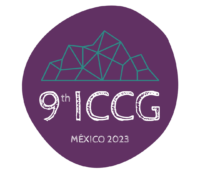Keywords: Territory; Latin American Geography; Occupations
Despite its widespread use by Latin American social movements, the concept of ‘territory’ has been overlooked by scholarship on housing activism, especially in the anglophone context. This paper looks at Brazilian housing struggles while bringing to light Latin American theorisations on territory. The paper pays specific attention to emerging forms of land occupation taking place at the fringes of Brazilian metropolises. These occupations are a product of highly organised processes involving residents, activists, planners and lawyers, rapidly appropriating large portions of land to conform planned self-built neighbourhoods which reclaim the use value of land and housing (Dias et al., 2018; Diniz Bastos et al., 2017; Morado Nascimento, 2016). The notion of ‘territory’ is commonly mobilised in the vocabularies of Latin American social movements. Such activist epistemology has inspired a rich situated geographical scholarship, which decolonises Anglophone notions of territory (Halvorsen, 2019). Thus, starting from the advantage point of Latin American theorisations on ‘territory’, the paper proposes four axes to look at Brazilian (peri) urban occupations: power, knowledge, scale and temporality.
Power: Territory is a productive concept to look at how power manifests in space (Haesbaert, 2020; Porto-Gonçalves, 2012). While traditional Anglophone understandings see territory as a means of control and ordering, Latin American perspectives advance the notion of territory as a coming together of domination and resistance (Halvorsen, 2019). As such, there is a need to focus on ‘used territories’, in which multiple political projects converge through conflictual forces emerging from the top-down and the bottom-up (Santos, 1999). Along these lines, the territories of Brazilian (peri) urban occupations are shaped by ongoing disputes with the state and the private sector, from resisting evictions to opening up spaces of negotiation and claiming for formalisation (Irazabal, 2018; Zhang, 2021).
Knowledge: As Latin American geographers argue, territorialities are always invented and imprint certain historical subjectivities. As such, Latin American cities have been shaped by the territoriality created and imposed by Portuguese and Spanish colonial states, embedded with values of modernity and private property (Porto-Gonçalves, 2012). While coloniality and its territorialities persists to present days (Quijano, 2000), Latin American social movements propose new emancipatory epistemologies in their territorialities, re-writing histories of modernity-coloniality from a subaltern standpoint. These movement-based territorialities not only reject hegemonic knowledge, but also appropriate, resignify and sometimes reproduce it (Porto-Gonçalves, 2012). In this way, Brazilian (peri) urban occupations conform territorialities by appropriating official discourses and technologies, usually supported by the expertise of planners and lawyers (Dias et al., 2018; Diniz Bastos et al., 2017; Morado Nascimento, 2016). Meanwhile, notions of private property are not only rejected, but also ressignified, as occupations make use of the legal apparatus around the ‘social function of property’ (Dias et al., 2018).
Scale: As Latin American geographers argue, territories are made and remade through the articulation of multiple scales. Meanwhile, scales are prone to contestation, being forged and gaining meaning through the agency of various subjects and the power relations between them. As such, territorial struggles act beyond the local, moving upwards to reach national and global realms and strengthen their fights (Porto-Gonçalves, 2012). Accordingly, Brazilian (peri) urban occupations are part of multiscalar networked articulations, mediated through nationally-based housing movements. Such articulations open up to translocal collaborations and engagements with multiple levels of governance (Dias et al., 2018). Latin American geographers also bring attention to the scale of the body, through the notion of cuerpo-territorio (body-territory). Such feminist readings of territory highlight the body, with its emotions and intimacies, as a fundamental scale of not only biopolitical power but also corporeal resistance (Haesbaert, 2020). As such, in occupations the bodies of residents and activists are major sites of territorial control and contestation. While embodied personal histories of oppression shape the disposability of marginalised residents, bodies act as powerful tools to resist evictions and transform territories.
Temporality: Latin American geographers see territory as a coming together of past, present and future. Territories are thus understood as ‘events’, i.e. as present instances shaped by particular histories but also as possibilities for anticipated futures (Santos, 1999). Brazilian (peri) urban occupations are a product of long-standing histories of coloniality, and also feed from the experiences of previous territorial struggles. At the same time, occupations operate through anticipation. Predicting future legislation, activists appropriate land designated as social housing and follow local planning regulations in the division of plots. Additionally, Latin American geographers see territories as processes, as being in constant transformation (Santos, 1999). Social movements’ territories are not just the locus of resistencia (resistance), but mostly or r-existencia (r-existence). In other words, more than reacting to a previous provocation, they shape and reinvent emancipatory modes of being (Porto-Gonçalves, 2012). As such, the struggle around occupations does not end after materialisation. Rather, it perpetuates through an ongoing politics of consolidation, legitimacy and negotiation, gradually shaping residents’ collective identities and political subjectivities (Dias et al., 2018).
Therefore, the paper will shed light on ‘territory’ and its Latin American situated conceptualisations as a critical, despite often neglected, vocabulary to look at housing activism. Although connected to the Brazilian context, the propositions presented in the paper could be used to look at other housing struggles as fundamentally territorial, articulating issues of power, knowledge, scale and temporality.
